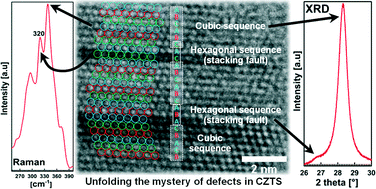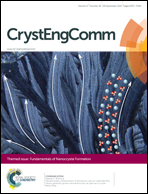A comprehensive study on the mechanism behind formation and depletion of Cu2ZnSnS4 (CZTS) phases†
Abstract
High efficiency kesterite based solar cells have vigorously raised the research interests in this material. The challenge lies in understanding the formation and co-existence of more than 10 possible by-products during and after the synthesis of Cu2ZnSnS4 (CZTS) and their various different structural and electronic defects. The present contribution shows an in-depth study on the stages of formation and depletion of nanoparticulate CZTS. Employing a hot injection synthesis method, we give direct experimental evidence of the co-existence of cubic, tetragonal and defected CZTS structures and different by-products as a function of time and temperature. SEM, (HR)TEM, XRD, EDX, ICP-OES, Raman spectroscopy and UV-Vis-NIR spectroscopy have been used in order to better evaluate and interpret data for crystal structures and compositions. The obtained understanding on the formation of different phases suggests 250 °C as the most favourable synthesis temperature. Based on our study, general strategies can be developed for controlling the amount of formed phases, the by-products and the defects in kesterite and other similar multicomponent nanoparticles as well as in bulk systems.

- This article is part of the themed collection: Fundamentals of Nanocrystal Formation

 Please wait while we load your content...
Please wait while we load your content...